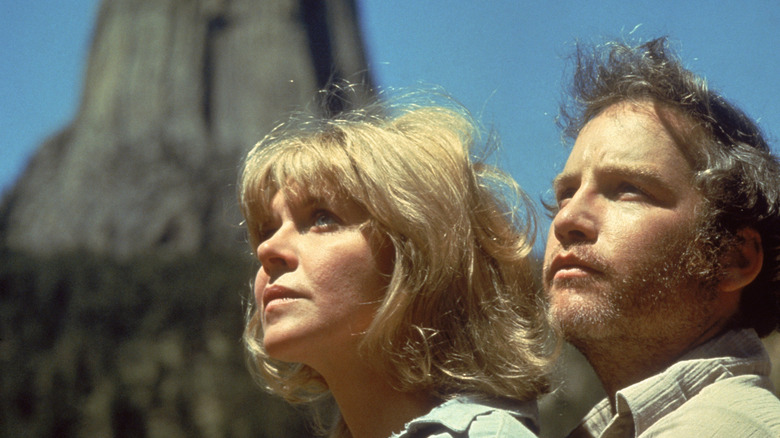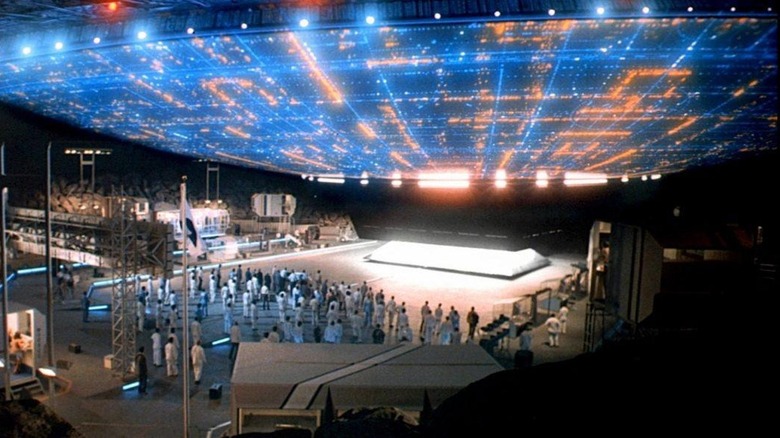Steven Spielberg's Bad Luck With Storms Carried Over To Close Encounters Of The Third Kind
Steven Spielberg is a force of nature in filmmaking. He's the highest-grossing director of all time and has produced countless iconic films, from "Jurassic Park" to "Indiana Jones." Spielberg's films are often big and exciting productions, bringing to life objects of childhood wonder in wondrous, adventurous films. Of course, the only thing that can stop a force of nature is another force of nature. And it's nature itself that has proven an obstacle to Spielberg multiple times during his career.
While filming "Jurassic Park" in Hawaii, filming was temporarily stopped due to a category 4 hurricane. The storm, which resulted in six deaths and over 3 billion dollars in damage, served as a major hurdle for the film's production. Even so, Spielberg made the most of it, obtaining footage of the storm for the movie. Spielberg flouted even one of Mother Nature's strongest threats and used it to create further movie magic. The man was unstoppable!
But this wasn't the only time that a natural disaster would put one of Spielberg's films on pause. A similar thing occurred during the filming of 1977's "Close Encounters of the Third Kind," where summer storms wreaked havoc on the Box Canyon set.
Steven vs. Nature
According to "Close Encounters of the Third Kind The Ultimate Visual History," the storms were an obstacle even to indoor shooting for the film.
"Summer storms were not uncommon in Mobile, but since the shooting was being carried out indoors, it was not thought to be a problem. One day, while filming his reaction to the scout ships, Bob Balaban looked to the far end of the hangar and saw a tiny piece of daylight leaking through the black tarp. The pinpoint of light began to grow slowly, until the tarp ripped open, exposing the set to the gale force winds that had split the material. A tremendous storm had enveloped the area. While the crew scrambled to salvage the enormous tarp, François Truffaut's directorial instincts kicked in, and he lifted his hands to his eyes in order to frame the tumultuous scene. He was later disappointed to find out that Spielberg's cameras had not captured the fury of the storm."
Perhaps it was Truffaut's excitement for the possibility of Spielberg obtaining storm footage that encouraged the director to capture Hurricane Iniki on film. Even with furious storms actively tearing apart his sets, Spielberg was determined to finish filming on schedule. The schedule of the entire filming was altered so that the tarp could be repaired without losing any time on set. It's this quick thinking and use of creative solutions that made Spielberg such a remarkable director.
"Close Encounters of the Third Kind" was yet another hit for Spielberg, even if he later regretted the ending. The movie serves as yet another piece of evidence that Spielberg's directing ability surpasses the power of Mother Nature herself, and we should all fear him, regardless of how much we enjoy his movies.

